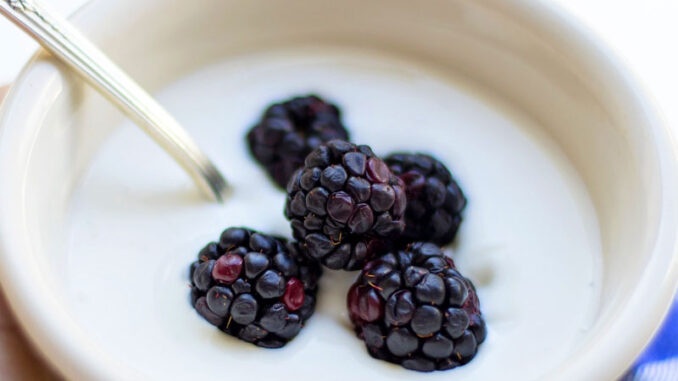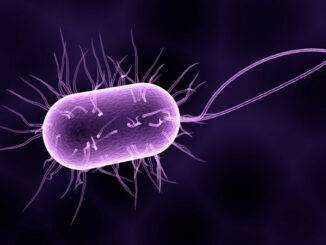
What is cholesterol?
Cholesterol is a waxy, fat-like substance that is found in the bloodstream and in all of the body’s cells. It is an essential component of cell membranes and is used to make hormones and other important molecules in the body.
There are two main types of cholesterol: low-density lipoprotein (LDL) and high-density lipoprotein (HDL).
LDL is often referred to as “bad” cholesterol because high levels of LDL in the blood can contribute to the buildup of plaque in the arteries, which can increase the risk of heart disease and stroke.
HDL, on the other hand, is often referred to as “good” cholesterol because it helps to remove LDL from the bloodstream and transport it to the liver for elimination.
Cholesterol levels can be influenced by a variety of factors, including genetics, diet, and lifestyle. A diet high in saturated and trans fats can increase cholesterol levels, while a diet high in fruits, vegetables, and whole grains can help to lower cholesterol levels. Regular exercise, maintaining a healthy weight, and not smoking can also help to improve cholesterol levels.
It’s important to have your cholesterol levels checked regularly, especially if you have a family history of heart disease or other risk factors. Your healthcare provider can help you understand your cholesterol levels and make recommendations for managing them.
How is cholesterol level measured?
Cholesterol levels are typically measured through a simple blood test called a lipid panel or lipid profile. This test measures the levels of total cholesterol, LDL cholesterol (the “bad” cholesterol), HDL cholesterol (the “good” cholesterol), and triglycerides (a type of fat found in the blood) in the bloodstream.
The test is usually done after a 9-12 hour fast, which means that you should not eat or drink anything except water for 9-12 hours before the test. Your healthcare provider will take a blood sample from a vein in your arm and send it to a laboratory for analysis.
The results of the lipid panel will be reported in milligrams per deciliter (mg/dL) of blood. The American Heart Association recommends the following target cholesterol levels:
- Total cholesterol: less than 200 mg/dL
- LDL cholesterol: less than 100 mg/dL (or less than 70 mg/dL for people at very high risk of heart disease)
- HDL cholesterol: more than 40 mg/dL for men and more than 50 mg/dL for women
- Triglycerides: less than 150 mg/dL
It’s important to note that these values are general guidelines and that the target cholesterol levels may vary depending on an individual’s risk factors and overall health. Your healthcare provider can help you understand your cholesterol levels and make recommendations for managing them.
What are the main ways to reduce “bad” cholesterol?
There are several ways to reduce “bad” cholesterol, also known as low-density lipoprotein (LDL) cholesterol:
- Diet: Eating a diet that is low in saturated and trans fats, and high in fruits, vegetables, and whole grains can help to lower LDL cholesterol levels. Foods high in fiber, such as oats, barley, and legumes, have been shown to be particularly effective in lowering cholesterol levels.
- Exercise: Regular exercises, such as brisk walking, jogging, cycling, or swimming, can help to improve cholesterol levels by increasing the amount of HDL (good) cholesterol in the blood. Aim for at least 30 minutes of moderate-intensity aerobic activity most days of the week.
- Weight management: Maintaining a healthy weight can help to lower LDL cholesterol levels. Losing weight can also improve the balance of LDL and HDL cholesterol.
- Quit smoking: Smoking can raise your LDL cholesterol levels and lower your HDL cholesterol levels. Quitting smoking can help to improve your cholesterol levels and reduce your risk of heart disease.
- Medications: If lifestyle changes are not enough, medications such as statins, bile acid sequestrants, nicotinic acid, and PCSK9 inhibitors can be used to lower LDL cholesterol levels.
It’s important to remember that everyone is different and the best approach to lower LDL cholesterol will depend on an individual’s risk factors, overall health, and medical history. It’s always a good idea to consult with a healthcare professional before making any significant changes to your diet or lifestyle.
Can Kefir help in lowering “bad” cholesterol (LDL) levels?
The consumption of dairy products is generally discouraged for individuals suffering from high cholesterol. Yet, Kefir contains a large range of probiotics, and studies have suggested that consuming probiotics may have a beneficial effect on cholesterol levels.
A few studies have shown that consuming probiotic-rich fermented dairy products, like Kefir, may help to lower total cholesterol and LDL cholesterol (the “bad” cholesterol) levels.
This is thought to be due to the probiotics in Kefir that help to improve the balance of bacteria in the gut, which in turn may improve the metabolization of the “bad” cholesterol.
A “double-blind” scientific study from 2021 found that Kefir intake decreased blood pressure, fasting glycemia, LDLc, non-HDLc, Tg, and oxLDL, and increased HDLc levels in women. Kefir also reduced the risk of cardiovascular events for the next ten years. The study unambiguously concluded that Kefir intake improved blood pressure, fasting glucose, and lipid levels, reducing LDL and the risk of developing cardiovascular events.
Please keep in mind though that Kefir alone may not have a significant impact on cholesterol levels, as a healthy diet, regular exercise, and maintaining a healthy weight are the most important factors in managing cholesterol levels.
What other foods help lowering cholesterol levels?
There are several foods that can help to lower cholesterol levels:
- Oats and barley: These grains are high in soluble fiber, which can help to lower LDL cholesterol levels.
- Fruits and vegetables: Fruits and vegetables are high in fiber, vitamins, and minerals and are low in saturated fat. Eating a diet rich in fruits and vegetables can help to lower cholesterol levels.
- Nuts and seeds: Nuts, such as almonds and walnuts, and seeds, such as flaxseeds and chia seeds, are high in monounsaturated fats and fiber, which can help to lower cholesterol levels.
- Fish: Fish, particularly fatty fish like salmon, mackerel, and tuna, are high in omega-3 fatty acids, which can help to lower triglyceride levels and may also have a beneficial effect on LDL cholesterol levels.
- Legumes: Legumes, such as beans, lentils, and peas, are high in fiber and protein, and are also low in saturated fat, which can help to lower cholesterol levels.
- Plant-based oil: Plant-based oils such as olive oil, canola oil, and avocado oil are high in monounsaturated fats which can help to lower cholesterol levels.
- Soy products: Soy products, such as tofu, tempeh, and soy milk, are high in protein and low in saturated fat and may help to lower cholesterol levels.
It’s important to note that these foods should be consumed as part of a healthy and balanced diet and should not be used as a replacement for cholesterol-lowering medications prescribed by a healthcare professional if needed.



